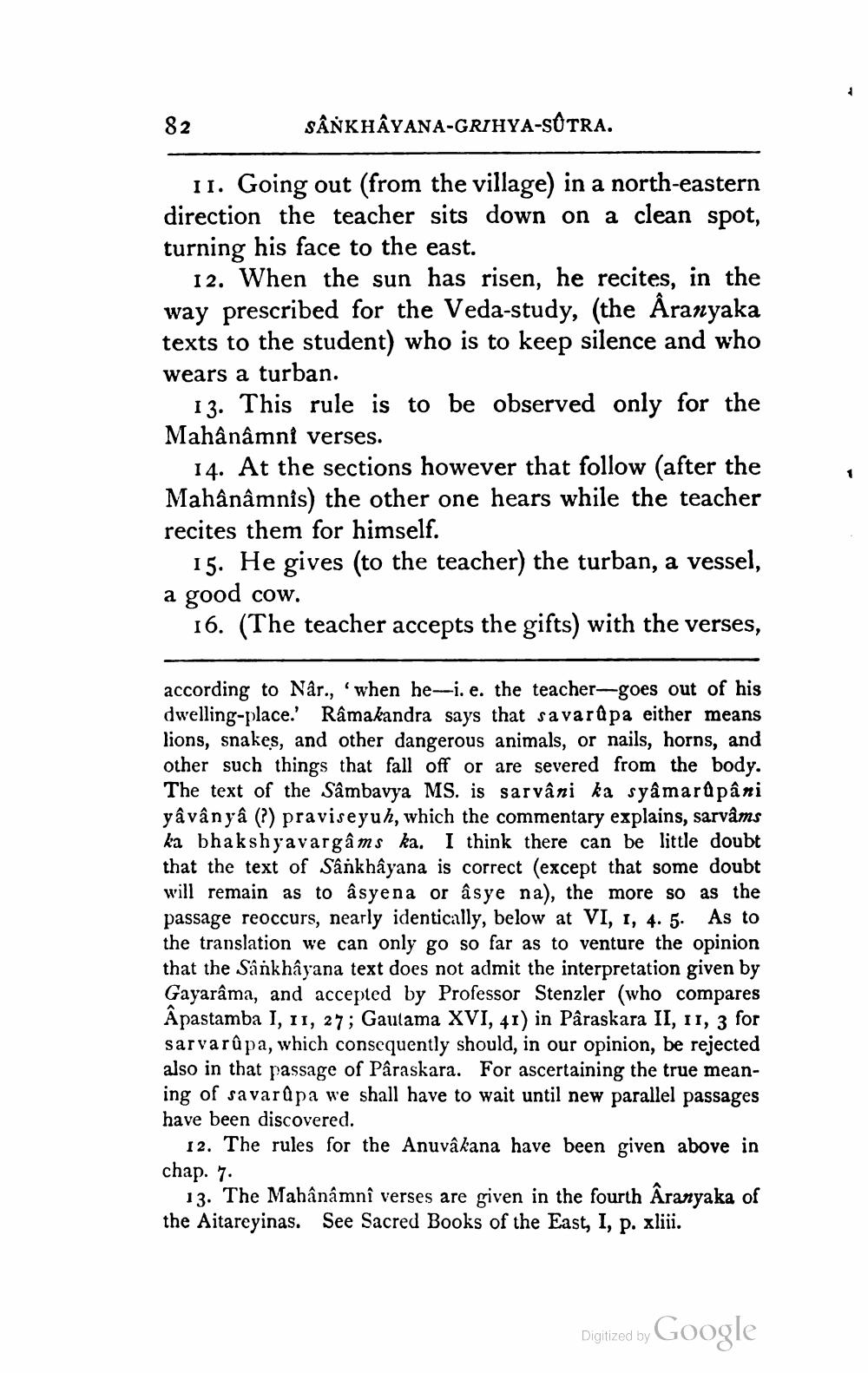________________
SANKHAYANA-GRIHYA-SÛTRA.
11. Going out (from the village) in a north-eastern direction the teacher sits down on a clean spot, turning his face to the east.
12. When the sun has risen, he recites, in the way prescribed for the Veda-study, (the Âranyaka texts to the student) who is to keep silence and who wears a turban.
13. This rule is to be observed only for the Mahânâmni verses.
82
14. At the sections however that follow (after the Mahânâmnis) the other one hears while the teacher recites them for himself.
15. He gives (to the teacher) the turban, a vessel, a good cow.
16. (The teacher accepts the gifts) with the verses,
according to Nâr., 'when he-i. e. the teacher-goes out of his dwelling-place.' Râmakandra says that savarûpa either means lions, snakes, and other dangerous animals, or nails, horns, and other such things that fall off or are severed from the body. The text of the Sâmbavya MS. is sarvâni ka syâmarûpâni yâvânyâ (?) praviseyuh, which the commentary explains, sarvâms ka bhakshyavargâms ka. I think there can be little doubt that the text of Sânkhâyana is correct (except that some doubt will remain as to âsyena or âsye na), the more so as the passage reoccurs, nearly identically, below at VI, 1, 4. 5. As to the translation we can only go so far as to venture the opinion that the Sankhayana text does not admit the interpretation given by Gayarâma, and accepted by Professor Stenzler (who compares Âpastamba I, 11, 27; Gautama XVI, 41) in Pâraskara II, 11, 3 for sarvarûpa, which consequently should, in our opinion, be rejected also in that passage of Pâraskara. For ascertaining the true meaning of savarupa we shall have to wait until new parallel passages have been discovered.
12. The rules for the Anuvâkana have been given above in chap. 7.
13. The Mahânâmnî verses are given in the fourth Âranyaka of the Aitareyinas. See Sacred Books of the East,
P. xliii.
Digitized by Google
1
1




